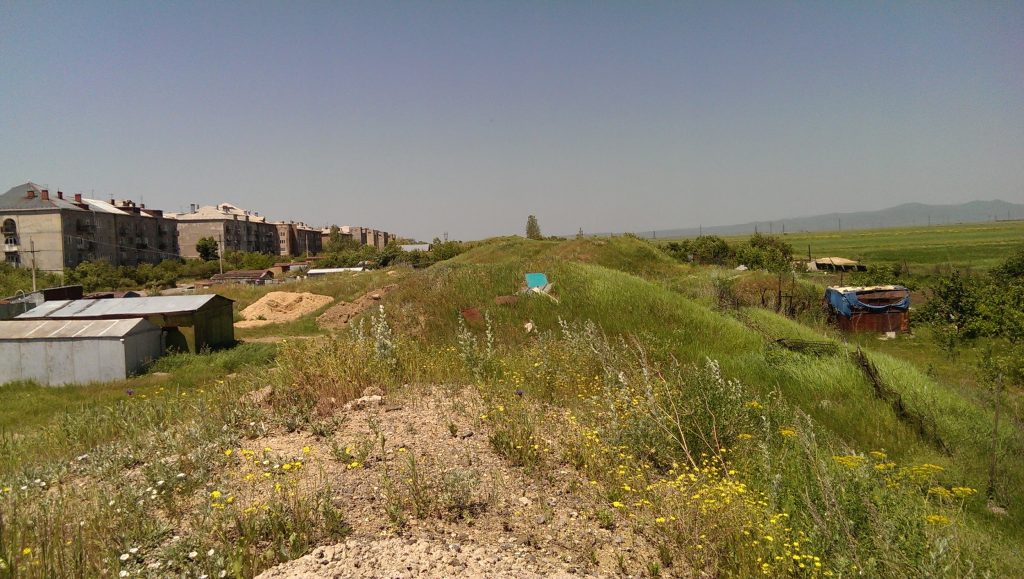Special to the Armenian Weekly

I grew up knowing I was Armenian, but outside of eating pilaf and the I-A-N at the end of my last name, being Armenian did not influence my life in any major way. I went to school, university, and traveled around the world, not thinking about my place in that world as an Armenian. It wasn’t until I went to Armenia in 2015 that a being Armenian permeated my life. Like, really permeated into the smallest niches of my life, ones I didn’t even realize could be Armenian.
I just finished reading Meline Toumani’s 2014 book There Was and There Was Not, and two questions she poses on the last page have stuck to my gut: “What does it mean to be Armenian, or Turkish, or anything else? What does it give you, and what does it keep you from getting?”
Up until I came back from Armenia in the fall of 2015, my main identity had been as a subset of the American farmer: a young female farmer. It’s an identity I’ve embraced for the last five years, with the support from farmer mentors and peers both. I am employed by a successful Community Supported Agriculture (CSA) farm, and have found a place for my voice in the ranks of the Central Minnesota chapter of the National Young Farmers Coalition. In 2017 we even passed a law; the first in the nation beginning farmer tax credit. This is an identity I find strength in.
When I came back from Armenia, however, I realized I was now tending to my vegetables with some sort of elusive “Armenian-ness.” What was this about? Was I actually a young, female, Armenian farmer? And how could I be an Armenian farmer without an Armenian community?
I had nothing to compare the Armenians I met in Armenia to. I didn’t have an Armenian community growing up, and I don’t have one now. While there is an Armenian Church in St. Paul, Minn., as a non-church-goer, I do not have that community in my circle. The sense of Armenian-ness I brought back to Minnesota put me on guard. How could I be a farmer who is Armenian without anyone to second that I am as Armenian as I feel? If a tree falls in the woods and no one hears it does it make a sound?
I had found my Armenian-ness in the agricultural similarities I witnessed in Hayastan (Armenia). I noticed the small personal gardens, and saw how those small plots of soil made up the food decisions of Armenian families, much like my own.
My homestay family in Gyumri grow fruit in their garden for preserving, and pick grape leaves from their vines for dolma and for freezing for the winter. Going into the grocery stores in Armenian cities and towns, even with that relative accessibility of imported food, it was too expensive to buy jars of preserved vegetables. Maybe in part this need to provide themselves with their own food is part economical, part social, part habit. Either way it was familiar. I have been preserving my own food for as long as I’ve been farming. I can tomatoes, I freeze as much kale and peppers as I can, I pickle cucumbers. The pervading sense of being an Armenian and a farmer was as if I could not afford, spiritually or financially, to let anyone else grow my food.
This might sound a little bleak—and I may have been stretching my admittedly strained experience in Armenia to make sense of it—but as I saw it, the tie between being Armenian and being a farmer is a sense of place.

Farmers are dependent on their land, their land is their place. Armenians, as perhaps we all know, put a lot of emphasis on their place in the world. They, for all their big, boisterous personalities, find themselves confined in a small country, and in small-ish diasporan communities.
But although their physical spaces might be small, Armenians fill them with gardens, wherever dirt can be mounded or plants potted. Much of the little space they had, at least from what I saw in Gyumri, was reserved for winter food storage; stacking jars of pickles, apricots in syrup, jams, cured meats, honey, dried fruit in cupboards and even in bathtubs. Their freezers are dolmas of blanched grape leaves and eggplant (see what I did there?), all stores for the winter months.

Residents of neighborhoods in Gyumri built garden beds in the rubble from the aftermath of the 1988 Spitak earthquake. Hidden behind apartment blocks and fenced off by mounds of cinder blocks and sheet metal, tatikner and papikner (grandmothers and grandfathers) grow grape vines, garlic, herbs, strawberries, pears, and bush beans. They create barbecue areas for family gatherings of khorovats right across from dumpsters of burning garbage.
What does being Armenian give me, and what does it prevent me from getting in my life as a farmer? This new Armenian part of my young, female farmer identity gives me a boost in confidence by way of pride. But since returning home from that summer trip to Armenia in 2015, it feels that I can and in fact should do this hard work of farming because I am Armenian. It is as if, even in the safety and comfort of my American life where amenities and food are not in short supply, I have the feeling of needing to do it myself to ensure the security of my food.
Food is one of the most important and powerful carriers of culture the world over. I am entirely inspired to farm knowing that the food I grow will be used in so many ways, in so many cuisines. That someone will make chimichurri sauce with the parsley I bring to market, but that I will make tabbouleh, the right way. With 75 percent parsley and very little else.

